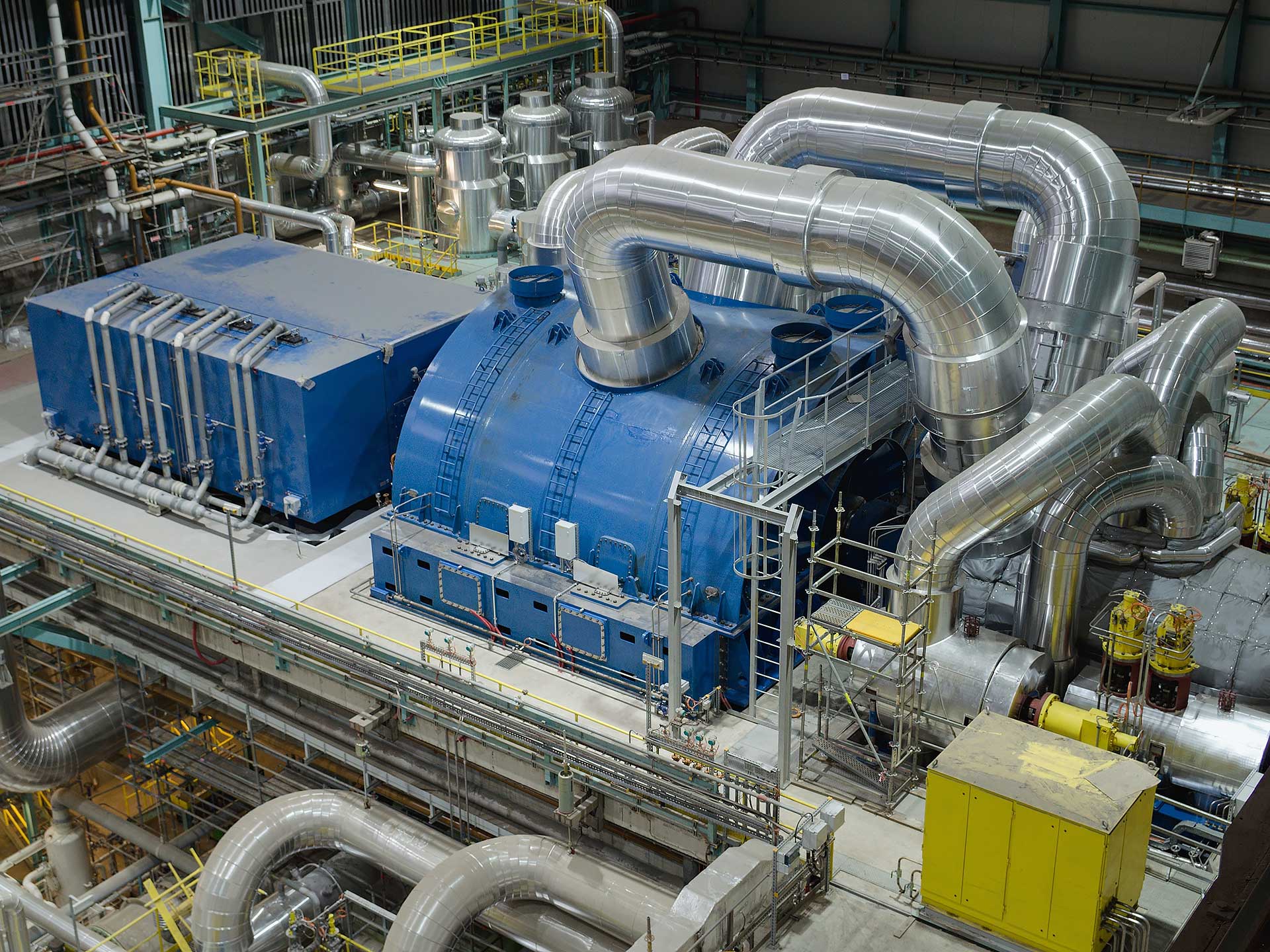Many power cycles, particularly those used in power plants for electricity generation, use a working fluid that undergoes liquid-to-vapor and vapor-to-liquid phase changes. These plants use an external heat transfer source, which can be from the combustion of fossil fuels (natural gas, oil, coal) or biomass materials, from nuclear energy release, from solar energy, from geothermal energy, from waste thermal energy, or from any other thermal source. The cycle to produce mechanical power output to drive an electrical generator is the same regardless of the thermal energy source used as input to the cycle.
Engines operating on vapor cycles are usually closed cycles, and the working fluid is cycled among various devices. (This is not always the case. Steam locomotives, for example, often took liquid water from the engine tender. The water was boiled to produce high-pressure steam and then the steam was expanded in the engine pistons to produce work. The low pressure steam was simply exhausted from the pistons directly to the atmosphere rather than condensed and reused.)
 The major vapor power cycle used today is the Rankine Cycle, which is the focus of this chapter. The Rankine Cycle has its roots in the steam age, when thermodynamic cycles first became widely used. These early thermodynamic cycles were used in steam engines to generate mechanical power from the combustion of fossil fuels (most notably coal) and wood. The application of the steam engine radically altered society in many ways. Prior to the steam engine, transportation speeds were typically not much faster than a person could walk and major inland transportation routes usually followed a waterway, such as a river, canal, or lake. Steam engines significantly increased the speed of boats and ships. Steam powered trains opened new inland transportation trade routes that did not depend on waterways. The earliest electric generating plants used hydropower to generate electricity and were only economically feasible in areas with easily exploitable hydro resources (i.e., where a significant volume of water underwent a significant elevation change over a short distance). The application of the steam engine to generate electricity brought electricity to the large populations living in areas without adequate hydro resources nearby, most notably the mid-West.
The major vapor power cycle used today is the Rankine Cycle, which is the focus of this chapter. The Rankine Cycle has its roots in the steam age, when thermodynamic cycles first became widely used. These early thermodynamic cycles were used in steam engines to generate mechanical power from the combustion of fossil fuels (most notably coal) and wood. The application of the steam engine radically altered society in many ways. Prior to the steam engine, transportation speeds were typically not much faster than a person could walk and major inland transportation routes usually followed a waterway, such as a river, canal, or lake. Steam engines significantly increased the speed of boats and ships. Steam powered trains opened new inland transportation trade routes that did not depend on waterways. The earliest electric generating plants used hydropower to generate electricity and were only economically feasible in areas with easily exploitable hydro resources (i.e., where a significant volume of water underwent a significant elevation change over a short distance). The application of the steam engine to generate electricity brought electricity to the large populations living in areas without adequate hydro resources nearby, most notably the mid-West.
The Corliss Steam Engine

 Corliss engines used a patented valve design by US inventor George H. Corliss that reduced steam usage and improved overall engine performance. Most large mill engines in stationary applications such as for operating looms used the Corliss design. Shown above is a mill engine on display at the British Science Museum in London. This is a double expansion engine, in which high-pressure steam from the boiler first enters a small high-pressure piston/cylinder for work extraction. Exhaust steam from the high-pressure cylinder is then ducted to a much larger low-pressure cylinder for further work extraction.
Corliss engines used a patented valve design by US inventor George H. Corliss that reduced steam usage and improved overall engine performance. Most large mill engines in stationary applications such as for operating looms used the Corliss design. Shown above is a mill engine on display at the British Science Museum in London. This is a double expansion engine, in which high-pressure steam from the boiler first enters a small high-pressure piston/cylinder for work extraction. Exhaust steam from the high-pressure cylinder is then ducted to a much larger low-pressure cylinder for further work extraction.
These engines found widespread use throughout the 19th and well into the 20th century, when the widespread availability of electricity caused their replacement by smaller electric drive systems that required less maintenance and cost.
Corliss engines could be built in very large sizes, and one of the world’s largest was erected for display at the 1876 Centennial Exhibition. One of the major attractions on display in the building was the Corliss Centennial Steam Engine that ran power to all the machinery in the building as well as other parts of the world’s fair. The 1,400 horsepower engine was 45 feet tall, weighed 650 tons, and had one mile of overhead line belts connecting to the machinery in the building. It symbolized the technology that was transforming the United States into an industrial powerhouse.

